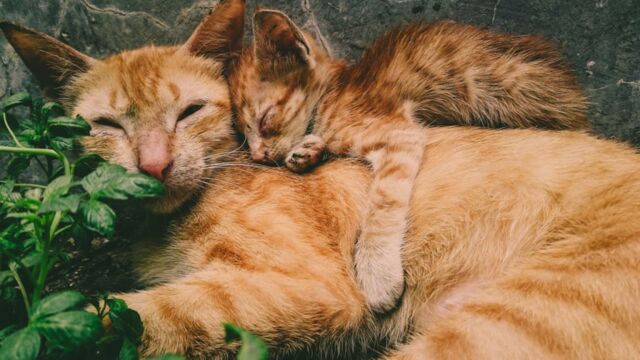Cats sleep at least 15 hours a day as compared to the eight hours we, humans, aim for. As much of this slumber happens during the day, you might have noticed some twitching in your cat. How normal is it, and when to worry? Let’s find out.
Discover our latest podcast
Why do cats really twitch in their sleep?

Twitching in sleep is perfectly normal in most cases.
The most common cause of involuntary movements during your cat's sleep is its dreams. Just like us, your pet sees good and bad things while it snoozes, and these things affect its body. Your feline might be chasing a bird or chased by a dog, where both activities are pretty physical and can cause twitching.
Another common reason behind the movements is nervous system development. This is mostly observed in kittens who tend to twitch more than adults, Pets Radar writes.
While some reasons are nothing to worry about, others can mean a medical emergency.
Twitching can also be caused by uncontrollable muscle spasms, which tend to affect a single part of the body, and dangerous seizures involving the entire body. These less common reasons are serious enough to head to the vet asap.
How to tell if my cat is dreaming or having a seizure?

Seizures are rare in cats, but they can occur during sleep. A cat who is having a seizure will typically experience widespread muscle rigidity, accompanied by rhythmic movements.
To see the difference between normal slumber twitching and an actual seizure, you have to pay close attention to your cat when they are both awake and asleep.
A dreaming feline may mimic wake activities like walking or running, a cat having a seizure will be tense across its entire body with its limbs kicking a lot stronger than usual.
Most cats experiencing fits show signs of neurologic changes during their waking hours too. If your cat is otherwise acting completely normal, their sleep-twitching is a lot less likely to be a seizure.
On the other hand, if your cat has experienced recent changes in appetite, energy level, or behaviour during other times of the day, seizures may be more of a possibility.
While normal twitching is a part of sleep and can be stopped by simply waking your pet up, you can’t do the same with seizure twitching. Seizures indicate abnormal activity in the brain and are a medical emergency in pets, as well as in humans.
If you suspect that your cat is having an actual seizure, contact your vet immediately.
Read more:
⋙ This is where your cat actually wants to be petted
⋙ The shocking reason why your cat rubs against you
⋙ Is your cat secretly mad at you? Watch for this feline behaviour to find out















